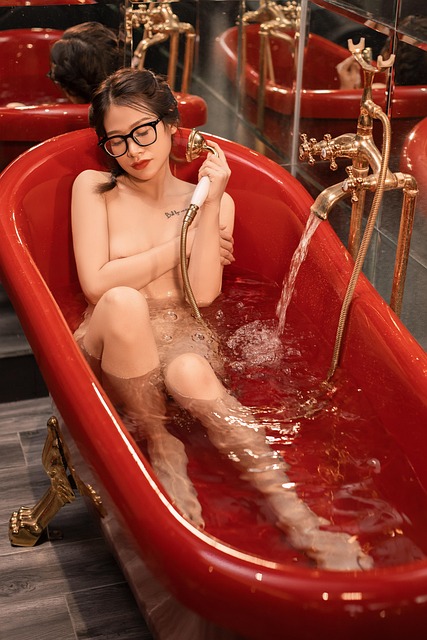Timeless Elegance: The Enduring Appeal of Clawfoot Tubs
In the realm of bathroom design, few elements evoke the sense of luxury and nostalgia quite like the clawfoot tub. These iconic fixtures, with their distinctive raised feet and elegant curves, have graced bathrooms for over a century and a half. Despite the ebb and flow of interior design trends, clawfoot tubs have maintained their allure, adapting to contemporary aesthetics while preserving their classic charm. From their Victorian origins to their modern interpretations, these bathtubs have become more than mere functional items; they are statement pieces that can transform an ordinary bathroom into a spa-like retreat. This enduring popularity speaks volumes about the clawfoot tub's ability to blend form and function, offering both a practical bathing solution and a touch of timeless sophistication.

The distinctive claw-shaped feet, often embellished with intricate designs, were not just decorative. They served a practical purpose by elevating the tub off the floor, making it easier to clean underneath and helping to prevent water damage to the flooring. This blend of practicality and ornate design perfectly encapsulated the Victorian aesthetic, which prized both functionality and visual opulence.
From Luxury to Ubiquity
Initially, clawfoot tubs were a luxury reserved for the wealthy. The process of manufacturing and installing these heavy fixtures was labor-intensive and costly. However, as production methods improved and became more streamlined, clawfoot tubs gradually became more accessible to the middle class.
By the early 20th century, these tubs had become a common fixture in homes across America and Europe. Their popularity was further bolstered by the growing emphasis on personal hygiene and the increasing availability of indoor plumbing. The clawfoot tub became a symbol of modern living, representing cleanliness, comfort, and a touch of elegance in the average home.
The Decline and Revival
The mid-20th century saw a shift in bathroom design preferences. The streamlined, built-in tubs of the Art Deco and Modernist movements began to supplant the more ornate clawfoot designs. These new styles were seen as more hygienic and space-efficient, aligning with the era’s focus on functionality and minimalism.
For several decades, clawfoot tubs fell out of favor, often removed from older homes during renovations. However, the late 20th century brought a renewed appreciation for vintage aesthetics and craftsmanship. Homeowners and designers began to recognize the charm and character that clawfoot tubs could bring to a space. This revival was not just about nostalgia; it was a rediscovery of the tub’s inherent beauty and versatility.
Modern Interpretations and Materials
Today’s clawfoot tubs come in a variety of materials and designs that cater to contemporary tastes while honoring their historical roots. While traditional cast iron models are still available and prized for their heat retention properties, acrylic and fiberglass versions offer lighter weight alternatives that are easier to install and maintain.
The classic white porcelain finish remains popular, but modern clawfoot tubs also come in a range of colors and finishes. Metallic exteriors, such as copper or brass, add a luxurious touch, while bold colors can make the tub a striking focal point in the bathroom. The feet, once primarily ornate and claw-shaped, now come in sleek, modern designs that complement minimalist interiors.
Incorporating Clawfoot Tubs in Contemporary Spaces
Designers and homeowners have found creative ways to integrate clawfoot tubs into various bathroom styles. In traditional settings, these tubs complement period details and classic fixtures. In modern spaces, they provide an intriguing contrast, serving as a sculptural element against clean lines and minimalist decor.
The placement of a clawfoot tub can dramatically affect the room’s ambiance. Positioned beneath a window, it creates a serene bathing experience with natural light. As a centerpiece in a spacious bathroom, it becomes a luxurious focal point. Even in smaller bathrooms, a carefully chosen clawfoot tub can add character without overwhelming the space.
The Practical Considerations
While aesthetically pleasing, clawfoot tubs do come with practical considerations. Their size and weight can make installation challenging, particularly in older homes with weaker floors. Proper support is crucial to ensure safety and prevent damage to the structure.
Plumbing is another factor to consider. Unlike built-in tubs, clawfoot models require exposed plumbing fixtures, which can be both a design feature and a potential complication. However, the wide array of stylish faucets and hardware available today allows homeowners to turn this necessity into an opportunity for added visual interest.
Environmental and Health Benefits
In an era of increasing environmental awareness, clawfoot tubs offer some unexpected benefits. Their durability and timeless design make them less likely to be replaced, reducing waste. Cast iron tubs, in particular, are recyclable at the end of their long lifespans.
From a health perspective, the deeper design of many clawfoot tubs allows for a more immersive bathing experience. This can promote relaxation and provide therapeutic benefits, aligning with the growing interest in home wellness spaces.
The Future of Clawfoot Tubs
As we look to the future, the clawfoot tub seems poised to maintain its place in bathroom design. Its adaptability to various styles and its ability to evoke a sense of luxury and relaxation continue to appeal to homeowners and designers alike. Innovations in materials and manufacturing techniques may lead to even more diverse options, potentially making these tubs more accessible and adaptable to different spaces and needs.
The enduring appeal of clawfoot tubs lies in their ability to transcend time and trends. They offer a tangible link to the past while fitting seamlessly into contemporary lifestyles. As bathrooms increasingly become personal retreats rather than merely functional spaces, the clawfoot tub stands as a symbol of indulgence and self-care, promising to remain a beloved fixture in homes for generations to come.






